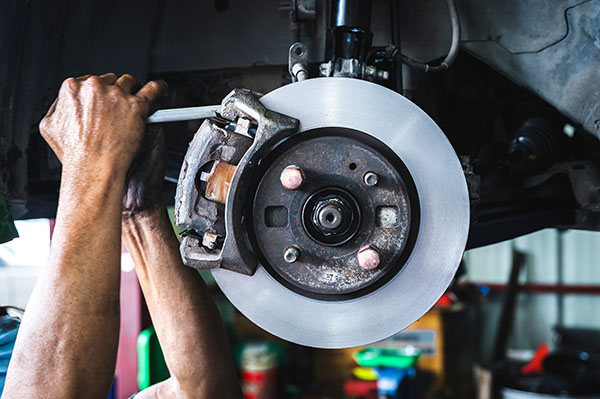
When it comes to driving, your car's braking system is important, to say the least. But did you know that air in the brake lines can turn a regular stop into a risky maneuver? The most common cause behind this? Air in the brake lines.
How Does Air Get In Brake Lines
Air can enter into brake lines through several means, including improper maintenance practices like brake fluid changes or brake system component repairs. It can also sneak in through leaks, particularly in corroded or damaged brake lines. Even small amounts of air can greatly affect brake performance, as opposed to brake fluid, which is not compressible.
5 Signs Of Air In Brake Lines
1. Spongy or Soft Brake Pedal
Imagine stepping on your brake pedal, and instead of the usual firmness, it feels squishy or sinks easily under your foot. This is often the first sign that air has gotten into your brake lines. Air in the lines makes the brake fluid less effective, leading to a soft pedal feel.
2. Inconsistent Braking
Have you ever felt that your brakes respond differently each time you use them? One moment, they might work fine, but the next, they require more force than usual. This inconsistency can be a warning sign that air is trapped in the brake lines, causing irregular pressure when you apply the brakes.
3. Vehicle Pulling to One Side When Braking
If you notice your car seems to drift to the left or right when you brake rather than stopping in a straight line, this could be due to air in the brake lines. The air can cause uneven pressure in the braking system, making one side more powerful than the other.
4. Brake Pedal Pulsation
Sometimes, you might feel a weird vibrating or pulsating sensation under your foot when you press the brake pedal, even though you're not stopping abruptly. This unusual feeling can indicate that air bubbles in the brake lines are disrupting the flow of brake fluid.
5. Brake System Warning Light
Most cars have a dashboard warning light that looks like an exclamation mark inside a circle (often red or yellow). This light can turn on for various reasons. If it illuminates along with any of these other signs, it could be pointing toward the air in your brake lines.
How To Avoid Air In Brake Lines
Making sure air stays out of your brake lines is key to safe driving. Here's how to do it:
Regular System Checks
Think of your car's braking system as part of its health. Just like you go for regular check-ups, your car needs them too. Have a professional mechanic inspect your brake system, including the lines and fluid, to ensure everything is in tip-top shape.
Proper Bleeding Techniques
When your brake fluid is changed or if any part of the brake system is repaired, it's essential to remove any trapped air. This process is called bleeding the brakes. Make sure this is done correctly, as improper bleeding can leave air bubbles behind.
Quality Repairs
If parts of your brake system need to be fixed or replaced, go for high-quality parts and professional service. Skimping on quality can lead to issues like air leaks in the brake system.
Avoid Excessive Brake Fluid Levels
Your car's brake fluid needs to be at just the right level – not too much, not too little. Overfilling the brake fluid reservoir can cause problems when the fluid expands, especially in hot weather. It's best to stick to the recommended fluid level.
Get rid of any vehicle-related problems by visiting Neighborhood Tire Pros! Whether you are from Suwanee, Decatur, or Marietta, we are here to help!